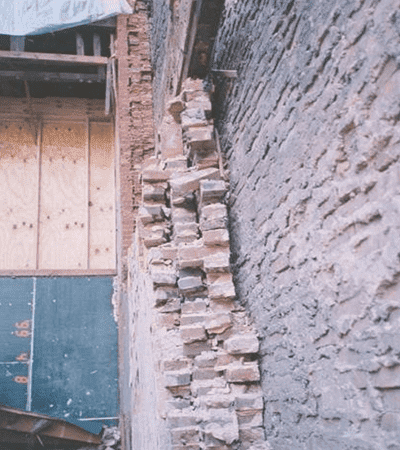Preserving a Building 'Beyond Repair'
Location: Baltimore, MD
Age/Built: 1906
Adaptive Reuse, Custom Solutions, Facade Repair and Attachment, Moisture Prevention, Services, Stabilization of Historic Structures, Testing and Analysis

Project Background:
- The American Urological Association (AUA), founded in 1902, is the premier professional association for the advancement of urologic care with over 19000 members
- Based in Baltimore since 1952
- The AUA purchased this historic early 20th century property as part of a $2 million expansion program
Challenges Presented:
- During the renovation, the project team realized that the front façade was severely separated from the shear walls
- The situation was attributed to over a century of freeze thaw ratcheting, modifications, and moisture infiltration
- In certain areas the masonry façade was more than 11 inches out-of-plumb!
- The demising and adjacent walls were in poor condition as well, with their masonry units lacking any significant bond to each other due to mortar deterioration
- The project team was heavily considering demolition due to the building’s rapidly worsening structural condition and associated safety concerns
Services and Solutions:
- MSI began by performing a detailed non-destructive evaluation and analysis of the masonry façade, utilizing fiber-optic borescoping and in-situ testing
- MSI laboratory engineers used NDE and in-situ testing results to inform the development of a custom CIF material that matched the properties of the host
- Masonry Solutions cautiously injected the demising walls first, utilizing a low pressure injection, solidifying the loose units of brick
- Masonry Solutions then devised an innovative temporary shoring system, a series of huge "C-clamps" that grabbed onto the façade and, with steel framing, tied back to the demising walls using cables. Nothing had to be put up on or over the sidewalk, and the solution was much cheaper and less intrusive than typical shoring
- With the façade secure, a low pressure injection protocol was applied throughout the façade and its brick backup
- By injecting the voids within these areas, MSI eliminated the pathways for moisture permeation associated with the structural decline of the building
- MSI technicians also installed a series of stainless steel reinforcements to pin the masonry to its supports
- Once all work was completed, NDE verified that the walls were solidified and the large separation between the façade and its brick backup had been filled
- Masonry Solutions International could take pride in knowing they had saved a valuable piece of their hometown’s historic fabric from being demolished







